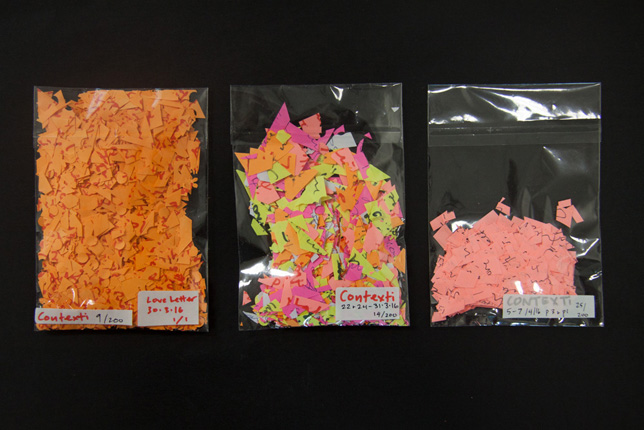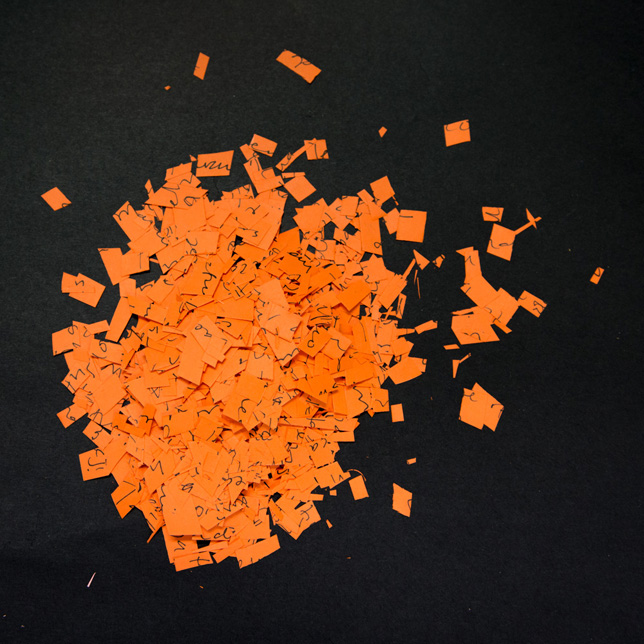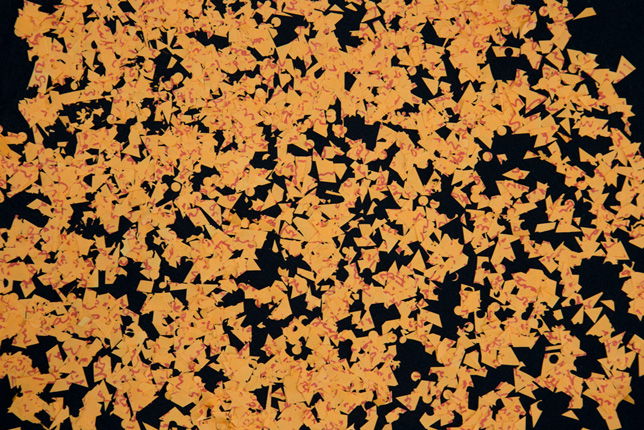There are many resonances and references in the process of cutting and weaving my handwriting. The content is disrupted, leading to the sign becoming merely a line, or stammer; that of asemic writing. William Burroughs’ cutting-up of language is echoed, but rather than language being a virus to disrupt, the disruption is to question voice and readership—who is being read or heard, and what is being listened to? Also, that I do not want this work to be read suggests a needed privacy, though the writing comes from personal journaling and one of the contexti packets has the title ‘love letter’.
The noise of personal opinions being expressed today with self-publishing in the digital age has us question the value of another individual voice expressed in writing. Would it add to the din? Or might it be a clear bell? Cut and woven it remains in potential as either, or neither. It is possible too for these pages of context, pieces that are the same colour, to be pieced back together, given time and patience, moreover interest – for who would want to do that? When I have performed with contexti, blown it from a confetti popper, the contexti, once drifted to the floor in a dusting of snow, is often perceived as rubbish.
The performance of this work is a disrupted play on the figurative meanings of weaving words or throwing one’s words away. The two dimensional page is thrust into movement and textuality. What is out of context is a new context of questions. What is the writing doing here? Why do I not want this work to be read? What is the point of writing if one’s work is not going to be read? Such questions underline a concern of my practice; most notably how women’s voices and writings are valued, and what is and is not given space.
The abstraction of written language and arbitrariness of the sign becomes even more abstract and arbitrary, but a pattern re-emerges in the weave, and can be sought in the contexti, for ultimately language is pattern. The mimesis of self in language, where a trace tracks that which is no longer (and ultimately never was), enacts Derrida’s différance: what is present due to its absence. The physical breach of my writing, created by the cutting, illustrates Derrida’s breach in language, where what one conveys and what is conveyed will always be in breach. The materiality of the page and subsequent augmentation into a physical otherness points to Charles Olson’s proprioception, the feedback of a part that is known due to its relativity, and to iteration, a tenet of Performance Writing.





Photography by Katie Hayne